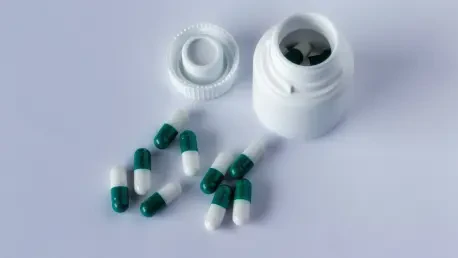In the pharmaceutical industry, adherence to Lean manufacturing principles is often hindered by stringent regulatory environments such as Good Manufacturing Practices (GMP). Lean methodologies aim to minimize waste and boost efficiency. However, integrating these principles without compromising compliance presents a significant challenge. This article delves into strategies for successfully adapting Lean methodologies to pharmaceutical contexts, focusing on improving operational efficiency while maintaining regulatory compliance.
Context of Lean in Pharmaceuticals
Understanding Lean Methodologies
Lean methodologies predominantly aim at streamlining operations by reducing waste, optimizing processes, and enhancing overall efficiency. While these principles have been successfully implemented in various industries, the pharmaceutical sector faces unique challenges. Integrating Lean into pharmaceutical manufacturing requires careful navigation of regulatory frameworks, which are stringent and unforgiving. In such highly regulated industries, Lean isn’t just about reducing costs or increasing output; it must adapt to uphold the integrity of products and processes. The challenge is to reinterpret Lean thinking to ensure that while processes are optimized, essential safety and compliance standards are maintained. Therefore, the application of Lean in this context demands a refined approach that respects the rigorous regulatory landscape while striving for operational excellence.
Regulatory Challenges and Considerations
The pharmaceutical industry operates under strict regulations to ensure that products are safe, effective, and manufactured consistently. When integrating Lean, the foremost consideration is how to enhance efficiency without breaching GMP standards. This balance is critical because it involves not only adhering to existing regulations but also anticipating changes that may affect processes. Compliance isn’t negotiable; therefore, Lean strategies must be tailored to fit within the rigid structures of pharmaceutical regulations. The pathway to successful Lean integration is developing strategic alignment between operational improvements and regulatory necessities, allowing companies to pursue innovation with the assurance that compliance is not compromised.
Emphasizing Information Flow
Transition from Physical Flow to Information Flow
In environments governed by GMP, the traditional focus on physical layout alterations is often neither feasible nor sufficient. Instead, the emphasis shifts toward optimizing information flow to improve operational efficiencies without disrupting current physical assets. The integration of Lean principles now prioritizes enhancing the flow of critical data and communication across departments. By doing so, pharmaceutical companies can achieve smoother internal processes, mitigate miscommunication, and foster alignment between various functions. Effective communication becomes central to aligning teams’ efforts toward common objectives, ensuring that everyone works cohesively within the parameters set by both Lean and compliance needs. This transition encourages teams to focus on agility and responsiveness, reducing unnecessary delays caused by redundant information bottlenecks.
Digital Transformation and Integration
Digital transformation is a cornerstone of modern Lean strategies in the pharmaceutical domain, enabling swift information exchange and actionable insights. The adoption of digital workflows and tools allows for seamless integration of data-sharing processes, enhancing decision-making capabilities and reducing downtime. With digital integration, companies can preemptively identify potential issues and rectify them before they escalate into regulatory concerns. Technologies such as real-time data analytics and automated reporting systems facilitate a proactive approach to potential deviations, fostering an environment where decisions are informed and swift without jeopardizing compliance. These advancements support a culture where agility is enhanced, and the risk of non-compliance is minimized, thus reflecting Lean’s adaptability to fit pharmaceutical standards without necessitating physical adjustments.
Cross-Functional Synergy
Aligning Cross-Functional Teams
A critical component of implementing Lean in the pharmaceutical industry is fostering collaboration across various departments, specifically aligning Quality Assurance, Quality Control, and Operations teams. These cross-functional teams must share a unified vision and understanding of the Lean objectives and compliance requirements. By doing so, companies can better streamline processes and reduce inefficiencies that may arise from siloed functional operations. Coordinated efforts across these teams help ensure that any adjustments made in the pursuit of Lean do not conflict with compliance standards and enhance the company’s ability to respond quickly to changes. It is imperative to establish clear communication channels and create a shared platform where these teams can collaborate and work towards common goals.
Enhancing Communication and Collaboration
Improving communication and collaboration is at the heart of successful Lean implementation in pharmaceuticals. Establishing a culture of open dialogue promotes transparent decision-making processes and helps teams navigate the complex regulatory landscapes more effectively. When teams communicate seamlessly, they can preemptively address potential regulatory concerns and optimize processes without compromising GMP standards. Collaborative efforts reduce decision-making latency, enabling quicker responses to emerging challenges and market demands. By encouraging collaboration, pharmaceutical companies not only enhance operational efficiency but also foster innovation within regulatory constraints, thus achieving a harmonious balance between maintaining compliance and pursuing continuous improvement.
Strategic Application of Lean Principles
Lean Tool Adaptation in Pharmaceuticals
Adapting conventional Lean tools to meet the specific needs of pharmaceuticals is essential for aligning operational improvements with compliance mandates. Tools like Kanban, traditionally used for inventory management, may require modifications to fit the stringent demands of this sector. Pharmaceutical companies must evaluate and adjust these tools to ensure they reinforce compliance objectives while achieving efficiency gains. The strategic application of Lean tools should aim to streamline operations, optimize resource utilization, and enhance agility without compromising regulatory adherence. It calls for a delicate balance between innovation and compliance, whereby tools are customized to suit the unique challenges presented by the pharmaceutical landscape.
Focus on Strategic Priorities
The true strength of Lean principles in pharmaceuticals lies in their ability to clarify strategic priorities and drive company-wide alignment towards achieving them. Companies should harness Lean to focus on unique strategic goals rather than perceiving it as a one-size-fits-all solution. This involves understanding where Lean can most effectively support their mission, whether it be in enhancing product quality, increasing process efficiency, or reducing costs. By concentrating on these priorities, firms can realize the full potential of Lean, ensuring that they optimize processes while adhering to regulatory standards. This focus not only enhances operational effectiveness but also builds a more resilient organizational structure capable of adapting to future challenges.
Managing Change Without Disruption
Balancing Innovation and Compliance
Pharmaceutical companies are tasked with driving innovation without compromising compliance, a challenge inherent in adapting Lean methodologies. Introducing Lean should not undermine the strict adherence to safety and quality standards ingrained in GMP practices. To maintain this balance, businesses must ensure that their innovative strategies are regulated accordingly, aligning them with compliance needs from the outset. This approach demands a nuanced understanding of regulatory mandates and an ability to integrate innovation in a way that strengthens compliance. Effective management of this balance creates an environment conducive to continual improvement while safeguarding the company against regulatory pitfalls.
Reducing Facility Upheaval
Implementing Lean in the pharmaceutical industry often emphasizes process improvements without resorting to physical layout changes. By optimizing processes and leveraging digital tools, companies can avoid the costly and time-consuming validation and requalification procedures that often accompany facility modifications. Process-focused Lean initiatives allow for significant operational enhancements that are compliant with regulatory standards, reducing the risk of facility disruption. Pharmaceutical firms can thereby enhance efficiency and output within existing infrastructures, using Lean to guide improvements that are strategic and compliant. Such an approach ensures that improvements are sustained and far-reaching, without the need for extensive physical alterations that could disrupt production.
Enhancing Decision-Making Processes
Reducing Decision Latency
A pivotal element to enhancing decision-making processes within pharmaceutical operations is the reduction of decision latency, achieved through streamlined information flow. Swift and accurate dissemination of information to stakeholders ensures timely decision-making, critical in a sector where delays can lead to severe regulatory and financial implications. By employing Lean strategies that prioritize clear communication channels and integrate real-time data analytics, companies can react promptly to market shifts and internal challenges. This acceleration of decision processes not only supports operational agility but also allows firms to maintain compliance while driving innovation and efficiency in product development and delivery.
Improving Deviation Handling
Incorporating Lean methodologies to handle deviations more effectively is crucial for maintaining consistent compliance while enhancing operational efficiency. Lean encourages a proactive stance towards deviations and non-conformities, whereby issues are addressed before they evolve into significant regulatory challenges. Implementing digital solutions and fostering a culture that values transparency and rapid response can greatly enhance deviation management. Such practices enable companies to swiftly identify deviations, assess their implications, and resolve them in alignment with compliance standards. The result is an operational environment that is both robust and responsive, capable of maintaining high standards without sacrificing efficiency.
The Role of Culture in Lean Implementation
Fostering a Lean-Oriented Culture
The successful adoption of Lean in pharmaceuticals is as much about cultural transformation as it is about process optimization. Embedding a Lean culture across the organization involves instilling values of continuous improvement, strategic agility, and proactive problem-solving among employees at all levels. This cultural shift is instrumental in overcoming resistance to change and ensuring sustained engagement with Lean principles. It requires consistent leadership commitment and investment in training and development to build competencies aligned with Lean thinking. Companies fostering a Lean-oriented culture cultivate an adaptive workforce equipped to navigate the complexities of the pharmaceutical landscape while upholding compliance standards.
Encouraging Continual Improvement
In the pharmaceutical sector, applying Lean manufacturing principles often encounters obstacles due to strict regulatory frameworks like Good Manufacturing Practices (GMP). Lean methodologies center on reducing waste and enhancing efficiency, key components for optimizing production processes. Nevertheless, implementing these principles can pose a substantial challenge when it comes to ensuring that regulatory compliance remains intact.
Successfully integrating Lean principles into the pharmaceutical industry requires thoughtful adaptation strategies. The goal is to improve operational efficiency without sacrificing the standards mandated by regulatory entities. This task demands a careful balance between streamlining processes and adhering to the stringent compliance protocols set by governing authorities.
To overcome these challenges, firms can explore various approaches, such as customizing Lean methods that suit the unique needs of the pharmaceutical environment. They can also invest in training for employees to ensure everyone understands how to maintain compliance within a Lean framework. Further, collaboration between regulators and the industry to shape compliance-friendly Lean practices may prove beneficial. By employing these strategies, pharmaceutical companies can strive towards a model that not only supports Lean manufacturing but also strictly upholds regulatory standards, ensuring both efficiency and compliance go hand in hand.









